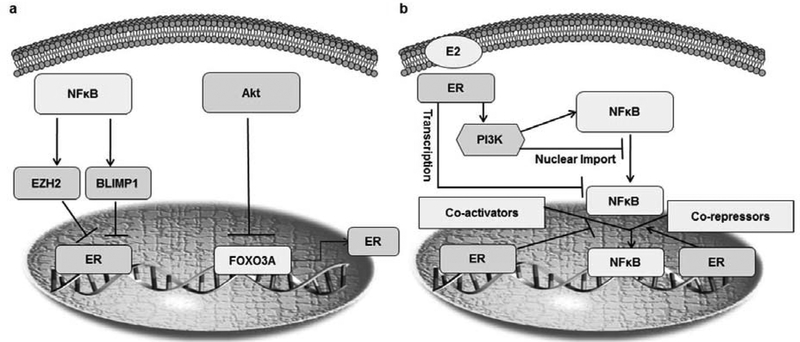Fig. (3). The interaction between ER and NFκB in breast cancer.
(a) Mutual transrepression of the ER and NFκB in mammary epithelial tissue. NFκB can inhibit the estrogen receptor (ER) in different ways. The activation of Akt inhibits the activity of FOXO3A, which plays an important role in the synthesis of the ER. Consequently, blocking FOXO3A activity leads to a reduction in the transcription of the ER. Another mechanism by which NFκB can inhibit the ER is by stimulating the activity of the enhancer of zeste homolog 2 (EZH2), which then inhibits the ER. Finally, NFκB (RelB) can also inhibit ER transcription by upregulating Blimp1. (b) The ER represses NFκB by blocking its nuclear translocation by increasing the transcription of the cytoplasmic NFκB subunit. ER signaling can activate the PI3K signaling pathway, leading to cytoplasmic accumulation of NFκB while inhibiting its nuclear translocation. Another mechanism by which the ER inhibits NFκB activity is by preventing it from binding to DNA.

